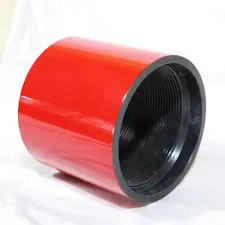- Afrikaans
- Albanian
- Amharic
- Arabic
- Armenian
- Azerbaijani
- Basque
- Belarusian
- Bengali
- Bosnian
- Bulgarian
- Catalan
- Cebuano
- Corsican
- Croatian
- Czech
- Danish
- Dutch
- English
- Esperanto
- Estonian
- Finnish
- French
- Frisian
- Galician
- Georgian
- German
- Greek
- Gujarati
- Haitian Creole
- hausa
- hawaiian
- Hebrew
- Hindi
- Miao
- Hungarian
- Icelandic
- igbo
- Indonesian
- irish
- Italian
- Japanese
- Javanese
- Kannada
- kazakh
- Khmer
- Rwandese
- Korean
- Kurdish
- Kyrgyz
- Lao
- Latin
- Latvian
- Lithuanian
- Luxembourgish
- Macedonian
- Malgashi
- Malay
- Malayalam
- Maltese
- Maori
- Marathi
- Mongolian
- Myanmar
- Nepali
- Norwegian
- Norwegian
- Occitan
- Pashto
- Persian
- Polish
- Portuguese
- Punjabi
- Romanian
- Russian
- Samoan
- Scottish Gaelic
- Serbian
- Sesotho
- Shona
- Sindhi
- Sinhala
- Slovak
- Slovenian
- Somali
- Spanish
- Sundanese
- Swahili
- Swedish
- Tagalog
- Tajik
- Tamil
- Tatar
- Telugu
- Thai
- Turkish
- Turkmen
- Ukrainian
- Urdu
- Uighur
- Uzbek
- Vietnamese
- Welsh
- Bantu
- Yiddish
- Yoruba
- Zulu
what is the difference between casing and tubing?
Understanding the Difference Between Casing and Tubing in Oil and Gas Wells
In the oil and gas industry, the terms casing and tubing refer to essential components in the drilling and production processes. Both play critical roles in ensuring the safe and efficient extraction of hydrocarbons from underground formations. However, they serve different purposes and have distinct characteristics. Understanding the differences between casing and tubing is vital for anyone involved in or studying the oil and gas sector.
What is Casing?
Casing is a series of pipes that are installed in the borehole after drilling to provide structural integrity and prevent the well from collapsing. The primary function of casing is to isolate various underground formations, ensuring that fluids do not migrate between them. It also protects both the groundwater above the formation and the environment from potential contamination during the extraction process.
Casing comes in various sizes and grades, designed to withstand different pressures, temperatures, and environmental conditions. The installation process involves several stages
1. Drilling the Well After reaching the desired depth, the well is drilled to create a borehole. 2. Inserting Casing The casing is inserted into the borehole, and its joints are welded or connected to create a continuous pipe. 3. Cementing Once the casing is in place, cement is pumped into the annular space between the casing and the borehole. This process helps secure the casing within the well, providing additional support and sealing off any formations.
Casing is often referred to by its type, which reflects its depth and purpose, such as surface casing, intermediate casing, and production casing
. Each type has specific roles—surface casing protects groundwater, intermediate casing aids in pressure control, and production casing is integral to the actual extraction of hydrocarbons.What is Tubing?
what is the difference between casing and tubing?

While casing serves to stabilize the wellbore and protect surrounding environments, tubing is a smaller pipe that is inserted inside the production casing. Its primary function is to transport oil or gas from the reservoir to the surface. Tubing is critical for the actual production phase of the well, as it enables the controlled flow of hydrocarbons.
Tubing is typically made of steel and is designed to withstand varying pressures and temperatures encountered during production. Unlike casing, tubing is not cemented in place; instead, it is hung from the casing head and can be removed and replaced as needed. This flexibility is crucial for maintenance and workover operations, allowing operators to repair or upgrade the tubing without disturbing the casing or the well's structural integrity.
The tube's diameter is smaller than that of casing, and it can have special design features like perforations, which allow oil or gas to enter the tubing from the surrounding rock formations.
Key Differences
1. Function Casing primarily provides structural support and protects the borehole from collapse and contamination, while tubing is responsible for the transportation of extracted hydrocarbons to the surface. 2. Installation Casing is cemented into place after drilling, while tubing is placed inside the casing and remains freely hung. 3. Maintenance Casing typically remains in the well for the long term, while tubing may need to be replaced or repaired more frequently, depending on wear and tear.
4. Size Casing is larger in diameter than tubing, reflecting its role in stabilizing the well, while tubing’s smaller size facilitates the flow of hydrocarbons.
Conclusion
In summary, casing and tubing are both vital components in the oil and gas extraction process, each serving distinct yet complementary roles. While casing provides structural integrity, environmental protection, and supports the wellbore, tubing plays a crucial role in the actual production of hydrocarbons. Understanding these differences is essential for honing the operations of well completion and ensuring safe, efficient resource extraction. As the industry evolves, the materials and technologies surrounding both casing and tubing continue to improve, emphasizing the importance of these two elements in modern oil and gas production.
-
Tubing Pup Joints: Essential Components for Oil and Gas OperationsNewsJul.10,2025
-
Pup Joints: Essential Components for Reliable Drilling OperationsNewsJul.10,2025
-
Pipe Couplings: Connecting Your World EfficientlyNewsJul.10,2025
-
Mastering Oilfield Operations with Quality Tubing and CasingNewsJul.10,2025
-
High-Quality Casing Couplings for Every NeedNewsJul.10,2025
-
Boost Your Drilling Efficiency with Premium Crossover Tools & Seating NipplesNewsJul.10,2025







